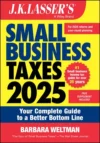Rollover Protects IRA Funds in Bankruptcy
One taxpayer who faced a mountain of debts, including more than $9,000 to the IRS and his state’s revenue department, had a plan. He’d withdraw funds from his IRA, place them in his personal back account, and use the money to buy lottery tickets in the hopes that winnings would cover his debts. Bad plan. Of the $50,000 he withdrew, he lost $1,000 in unsuccessful lottery tickets. He paid off his tax debts and ultimately put $20,000 back into his IRA and filed for bankruptcy protection.
The trustee in bankruptcy objected to the protection of his IRA funds, arguing that they lost their exemption once the funds were withdrawn and co-mingled in his personal bank account. Had the funds remained in his IRA they would have been exempt; no question. But because he withdrew them, they lost protection at that time.
A bankruptcy court sided with the individual (In re Richard L. Jones, B.Ct. SD-IL, No. 18-31532, 4/15/19). The tax law permits IRA funds to be withdrawn and redeposited within 60 days. If the redeposit is completed in time, then the IRA owner is not taxed on the distribution. Because he had $20,000 in his IRA on the day he filed for bankruptcy, the account is an exempt asset.
Passive activity loss rules
Rules that limit the deduction of losses from passive activities to income from other passive activities. Passive activities include investment rental operations or businesses in which you do not materially participate.



